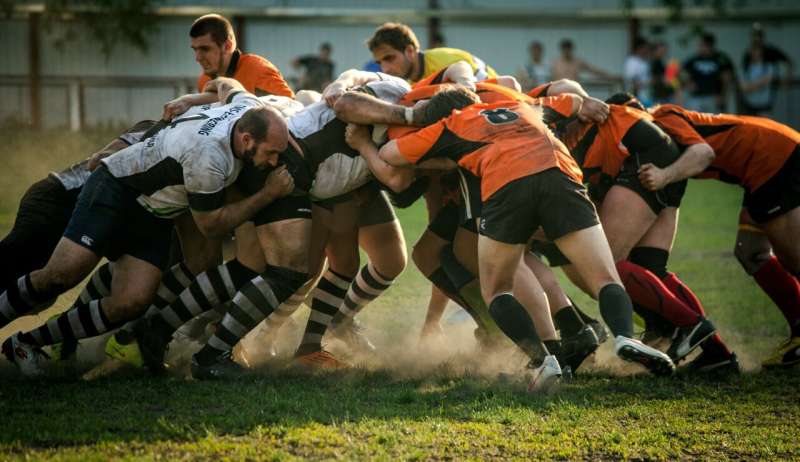This article has been reviewed according to Science X's editorial process and policies. Editors have highlighted the following attributes while ensuring the content's credibility:
fact-checked
trusted source
written by researcher(s)
proofread
Rugby injuries: How pre-season training can help players avoid the sidelines

The list of injured players in the Six Nations Championship is, once again, long. Unsurprising you may say, given the physical nature of the sport. That's often cited as one of the elements that captivates fans and attracts players.
Nevertheless, there is a fine line between the beautiful brutality of the game and the potential health implications of injury. So we set out to discover how important pre-season training is for preventing rugby injuries during the competitive season.
We chose this as our focus since the sport's governing bodies across the globe have prioritized studies which concentrate on injury prevention over recent years. Much of this research has assessed the risks of injury during competitive matches.
Tackling
Recent news reports have drawn attention to the dangers of concussion in rugby. Some 43% of injuries sustained on the rugby pitch happen as a result of tackling. Based on such evidence, World Rugby intends to lower the legal tackling height at elite level worldwide in the coming years to reduce the risk of head injuries in the sport.
But what about injuries from non-contact play such as hamstring, calf or thigh strains? Should attempts be made to prevent those types of injuries too? The mounting casualty list since the beginning of the 2023 Six Nations season suggests something needs to be done.
Many rugby players will be familiar with the pain and physical suffering of the pre-season. The primary aim of this period of intensive training is to improve performance ahead of the competitive season. But another important aim is to reduce the risk of injury. It therefore surprised us to discover that not much research had been done looking at the impact of the pre-season period on avoidable non-contact injuries.
To tackle this issue ourselves, we recorded and classified the non-contact injuries which occurred during pre-season training and matches across three competitive seasons in a semi-professional regional men's rugby union squad. We also analyzed the time and effort of every training session and match for each player over the same period. That gave us an insight into of each member of the team.
We found that a lack of training built up during the pre-season period may lead to an increased risk of injury by the time the competitive season comes around.
Our research suggests the players who accumulated the lowest amounts of pre-season training were nearly five times as likely to suffer a non-contact injury during the competitive season than those who had undertaken more extensive pre-season training.
Further analysis revealed those players with low pre-season training levels, who were then exposed to an increase in training early in the season, were 6.5 times more likely to suffer an injury in the competitive season. That was particularly pronounced if they had been injured during the previous season.
Our findings build on the established concept that too much training increases injury risk. Our research suggests that not enough training during the pre-season leads to greater risk of non-contact injury during the competitive season. It also appears from our work that if coaches then prescribe more training in the early competitive season to compensate for the lack of training in pre-season, the risk of injury may increase further.
Coaching
Since changes to rugby laws are not likely to prevent non-contact injuries, coaches could adopt other strategies to reduce the risk to players.
Based on our findings, we suggest that one approach to help prevent non-contact injuries in rugby union, would be the continued practice of monitoring the training of players more closely. And particular attention would need to be paid to the amount of training any given player had built up during the pre-season period. Ensuring this level of analysis occurs could help coaches and medical teams to determine whether a player is adequately prepared for the demands of the competitive season.
Clearly, we are never going to eliminate the risk of injuries in rugby completely. Sports injuries are complex and there are many related risk factors beyond training alone. So the prevention of injury needs to take a holistic approach. Such methods may include functional movement screening, which analyzes imbalances in mobility and stability. This could be coupled with other preventative strategies such as balance training and whole-body resistance training. Plyometric training would help to build muscle power too. And of course, recording individual players' training during the pre-season could also play a significant role.
What is important is that preventing injuries is prioritized to ensure player welfare. It would also help to minimize the personal and financial cost of participating in sport.
This article is republished from The Conversation under a Creative Commons license. Read the original article.![]()





















